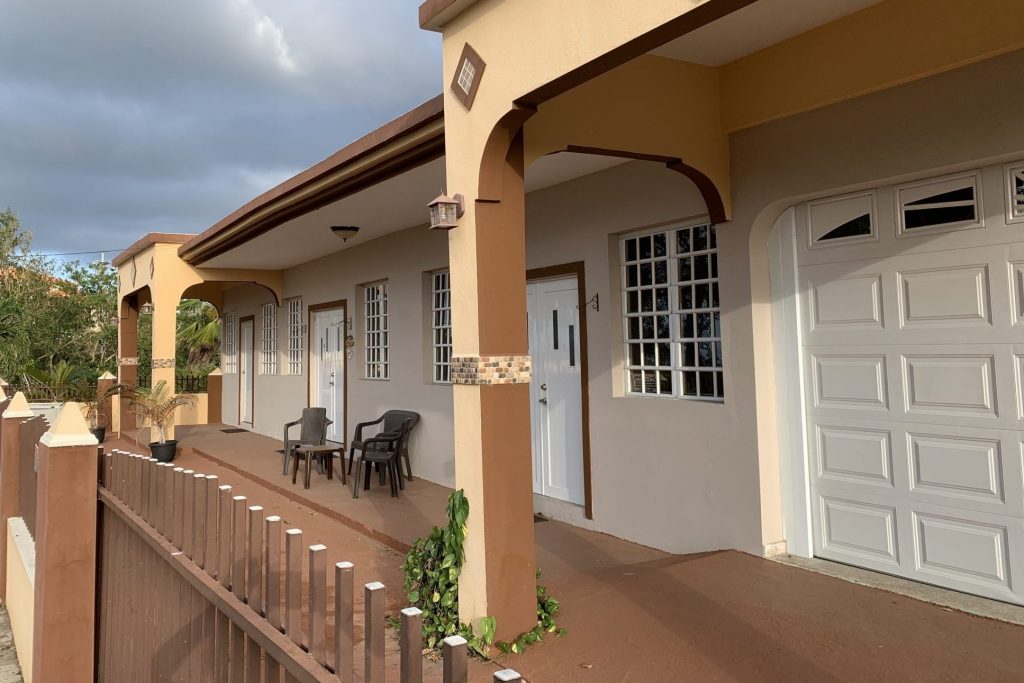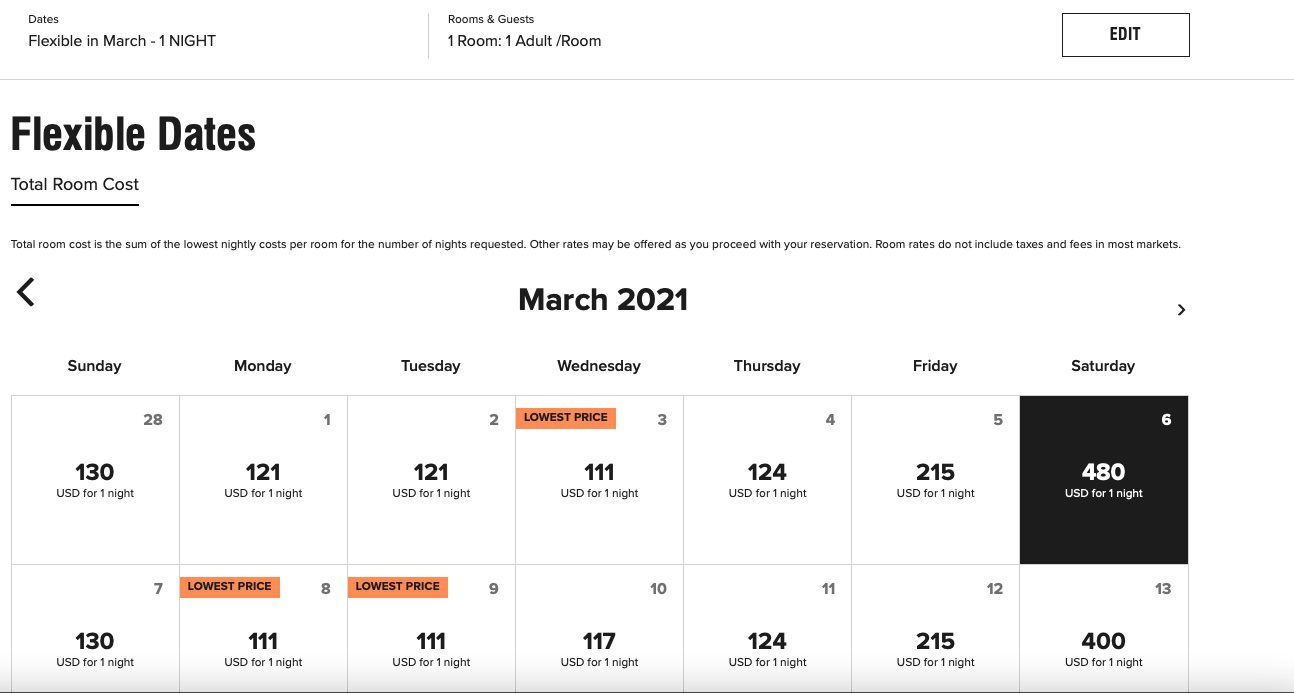Skift Take
Savvy consumers used to searching for hotel stays and seeing how rates change based on alternative dates may be disappointed in this Airbnb feature. That's because it doesn't do precisely that for a specific property. Still, the tweak is a nice twist in short-term rental trip planning.
It’s been a busy few days before Airbnb’s first earnings call as a public company — it launched a global brand campaign touting hosts, and introduced a flexible date search feature to accommodate price-conscious travelers and digital nomads.
The feature, which appears to be novel in the short-term rental industry, is a mixed bag.
Hotels, such as Marriott International, as well as airlines and Google Flights, have long enabled consumers to see how the price of their hotel stay or flight would be affected by choosing different dates.
Below is how Marriott does it for a specific hotel. You can see that the stay would cost $121 per night on February 2, and only $111 the next night, for instance.
Airbnb’s new feature does not provide that level of granularity.
Instead, Airbnb’s flexible date search, while valuable in some respects to prospective guests, is somewhat more limited. On Airbnb, users can’t see how rates might change on different dates for a specific property, but they can view availabilities and different rates at other properties on other dates.
The way it works is when searching for a stay on Airbnb, users can input their desired dates of stay, and also choose to view plus or minus one, three or seven days.
For example, when searching for March 8-12 stays in Pittsburgh, Pennsylvania, and selecting the option to view properties and rates for plus or minus seven days, one can view a a four-bedroom, two-bath property for $100 per night on those dates, but also see a $45 per night stay March 7-9 in an “adorable north side carriage house,” for example.
So one can view various prices and properties on different dates, but if you have fallen in love with a specific property, one can’t see how its rate would change based on various dates of stay.
One valid reason, though, for the functionality limitation is that rate changes on short-term rentals tend to not change nearly as often as those for hotels, which often use revenue management and dynamic pricing tools.
The various stays can be selected on a map as another way to view them.
Airbnb stated that one can also search for a weekend getaway, a week-long vacation, as well as month-long or months-long stays, but I couldn’t immediately view these as the rollout was ongoing.
Airbnb pitched the flexible search launch as providing more exposure and business for hosts under the theory that if consumers couldn’t find the right fit for specific dates, then they can view additional choices and properties for alternate dates.
Airbnb stated that the wider choices should fit in nicely with the remote work and digital nomad trends, as well.
“Remote work and learning are giving those fortunate enough to be able to work from home greater freedom to choose when they travel,” Airbnb said. “According to our new travel trends report, one quarter of Americans would consider traveling during off-peak times of the year or the week. And in 2021 to date, more than one third of people searching our platform have been flexible in terms of the date or location of their stay.”
Dwell Newsletter
Get breaking news, analysis and data from the week’s most important stories about short-term rentals, vacation rentals, housing, and real estate.
Have a confidential tip for Skift? Get in touch
Tags: airbnb, alternative accommodations, digital nomads, marriott, search, short-term rentals
Photo credit: An Airbnb rental in Rincon, Puerto Rico as seen in February 2021. Airbnb introduced a way to search for flexible dates of stay to view more options. Dennis Schaal / Skift


